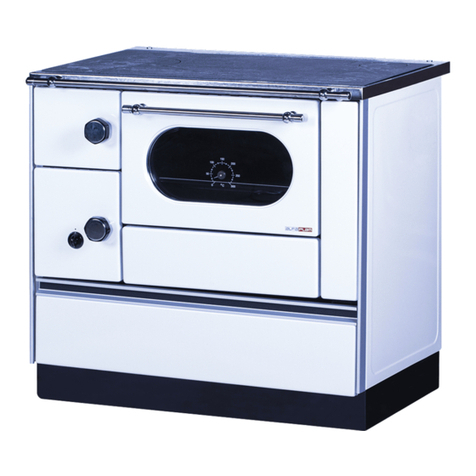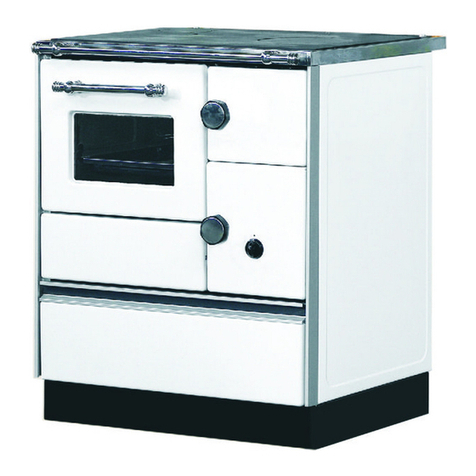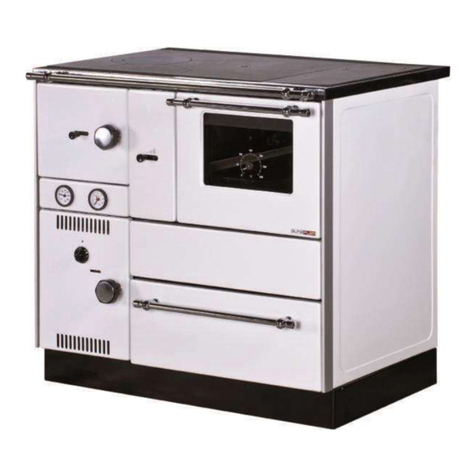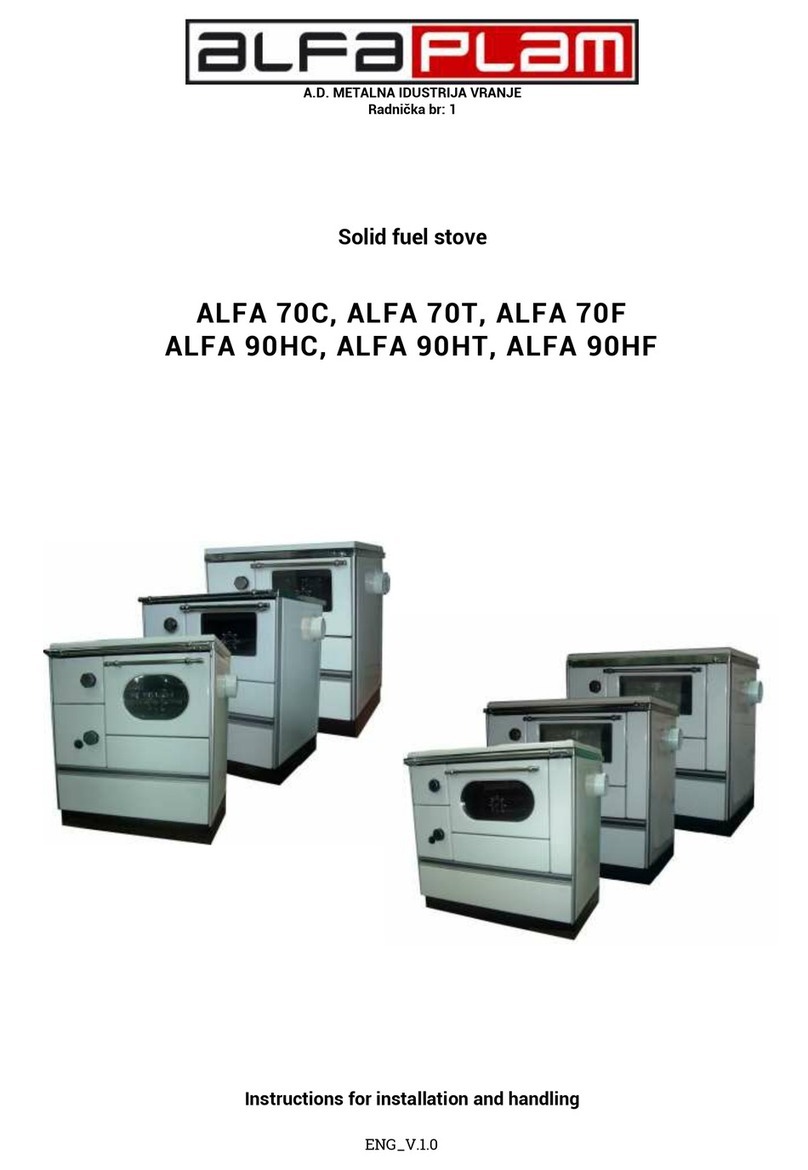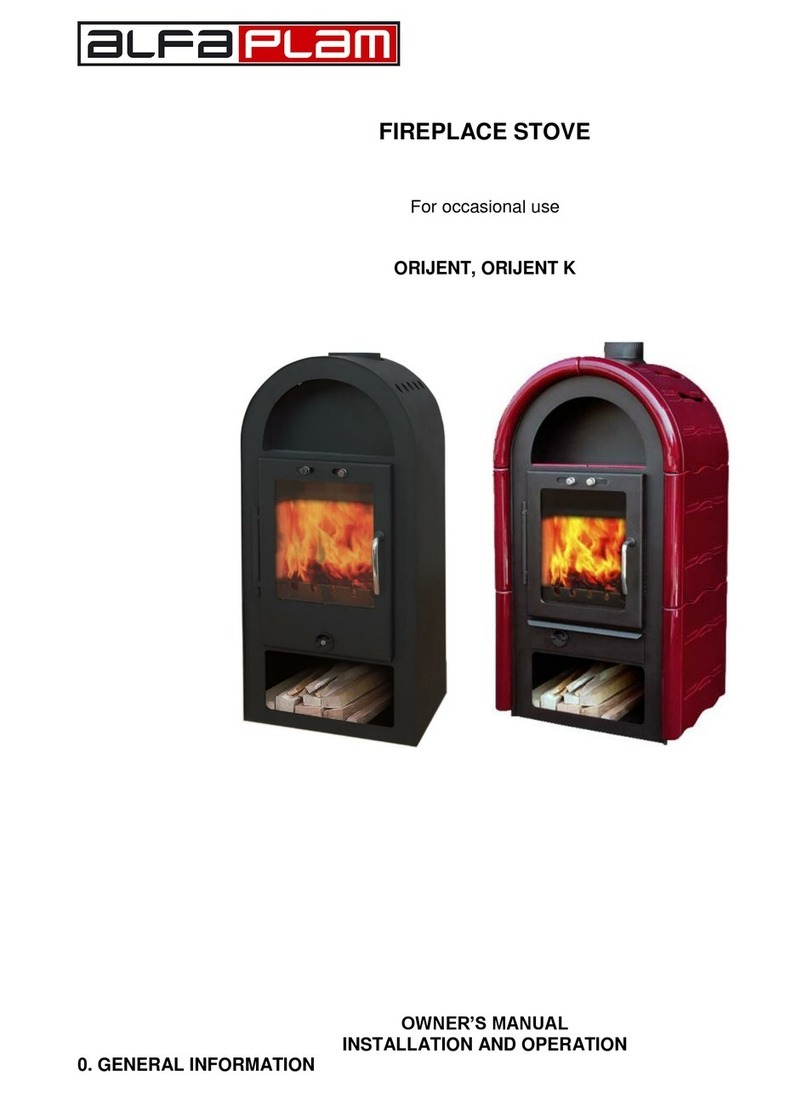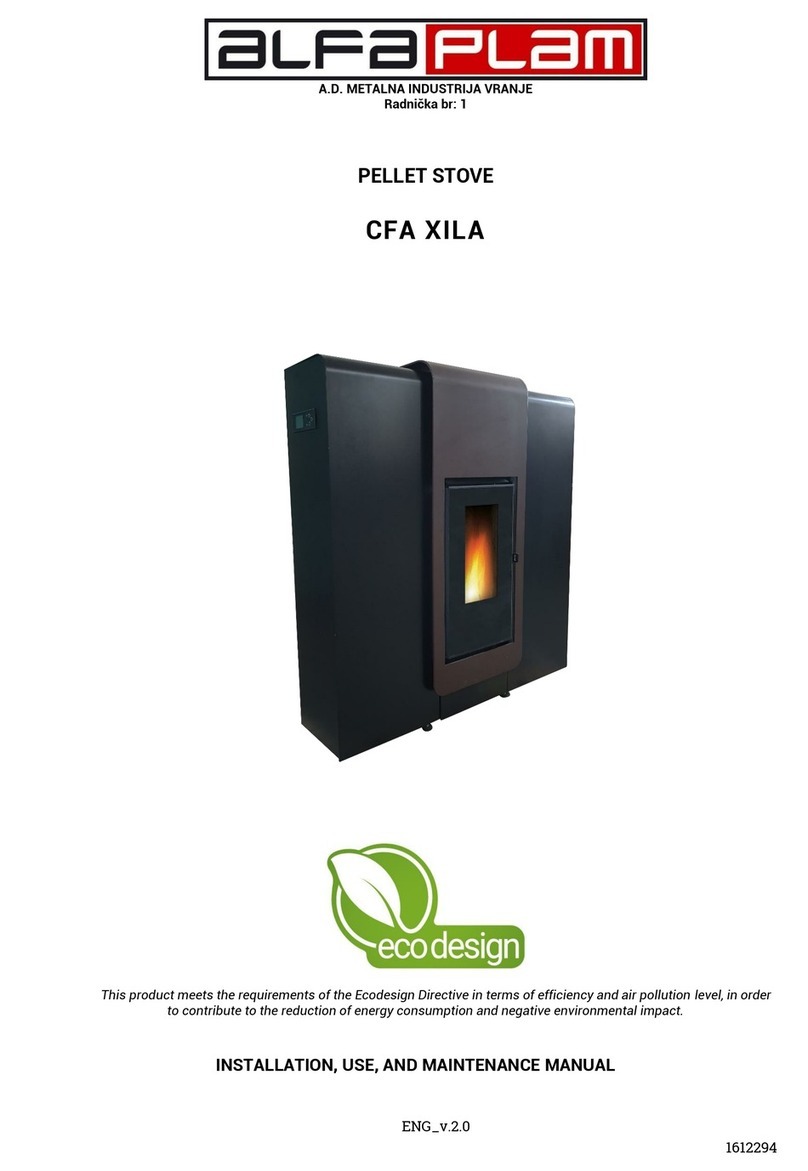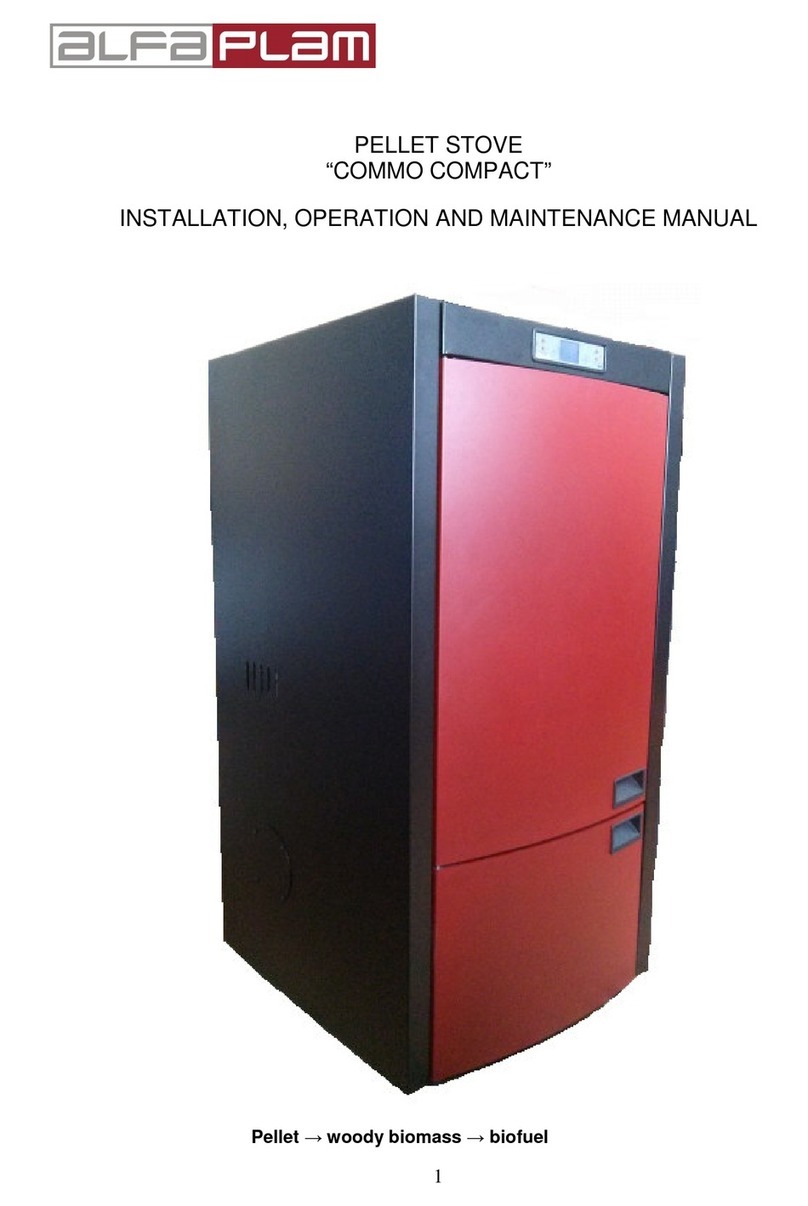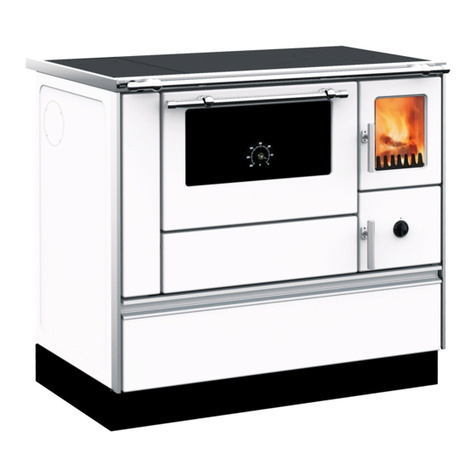
1
1. TECHNICAL DATA
Mass of the flow of waste gases
Temperature of of waste gases
Required pressure in the chimney
Stove dimensions(width x depth x height)
Oven dimensions (width x depth x height)
Height from the floor to the flue axis
2. THE RESPONSIBILITY OF THE MANUFACTURER
Upon publishing this Manual, ALFA PLAM will not accept any civil or legal responsibility, either direct on indirect, due to:
− Accidents occurred due to the non-observance of the standards and specifications stated in this Manual,
− Accidents occurred due to the improper operation or use of the stove by the user,
− Accidents occurred due to any modifications and repairs not approved by ALFA PLAM,
− Poor maintenance,
− Unpredictable events,
− Accidents occurred due to the use of spare parts that are not original spare parts or that are not
intended for these models of the stove.
The installer of the stove shall take the full responsibility for the installation.
2.1. THE BASIC CHARACTERISTICS OF THE USER
The stove must be used by adult and responsible people.
Make sure that children do not approach the stove, when it is in use, with the intention of playing.
Children must not approach the stove, while in function, with the intention of playing. This appliance can be used by
children aged from 8 years and above and persons with reduced physical, sensory or mental capabilities or lack of
experience and knowledge. if they are supervised by an elderly person who is familiar with the instructions of use. Children
cannot carry out the cleaning and maintenance of the stove, if they are not supervised by an elderly person.
2.1. THE TRANSPORTATION AND USE OF THE STOVE –HANDLING
During the use of the stove care should be taken that the stove is not leaned forward because the centre of gravity of the
stove is oriented forward.
While moving the stove, which must be carried out absolutely safely, ensure that the forklift truck has a carrying capacity
that is higher than the weight of the stove it should lift. Avoid twitches and abrupt movements.
ALL THE PACKAGING MATERIAL SHOULD BE REMOVED AWAY FROM THE REACH OF CHILDREN AS THE MATERIALS
CONTAINED IN THE PACKAGING MAY CAUSE SUFFOCATION. THESE INCLUDE PLASTIC BAGS, FILMS, STYROFOAM, ETC.
2.2. THE RESPONSIBILITY OF THE INSTALLER
The responsibility of the installer is to perform all the checkups of the flue piping, air intake/supply, as well as all the
solutions required for the installation (incorporation) of your stove.
The responsibility of the installer is to ensure that the stove is in compliance with local regulations applicable in the place
where the stove is installed (incorporated).
The use of the stove must be in accordance with the instructions given in this Manual for use and maintenance, as well
as with all the safety standards prescribed by local legal regulations applicable in the place where the stove is installed
(incorporated).
The installer must verify (confirm):
− The type of the stove that is being installed,
− Whether the room in which the stove is being installed is appropriate, which is expressed as the minimum size of
the room required for the installation as prescribed by the stove manufacturer,
− Instructions of the heat generator manufacturer, related to the requirements of the smoke discharge system
(smoke discharge ducts and pipes),
− The internal cross section of the chimney, material the chimney is made of, cross-sectional uniformity, whether
there are any obstacles and barriers in the chimney,
− The height and vertical extension of the chimney,
− The height above the sea level at the place of installation/incorporation,
− The existence and suitability of a wind resistant protective cover of the chimney,
− The possibility of providing the external air intake and the size of required openings,
− The possibility of the simultaneous use of the stove which is to be installed, together with the other equipment
already existing in that place.
If the results of all the checkups are positive, then the installer may proceed with the incorporation/installation of the
stove. The instructions provided by the stove manufacturer, as well as the fire prevention standards and safety standards
must also be observed.
